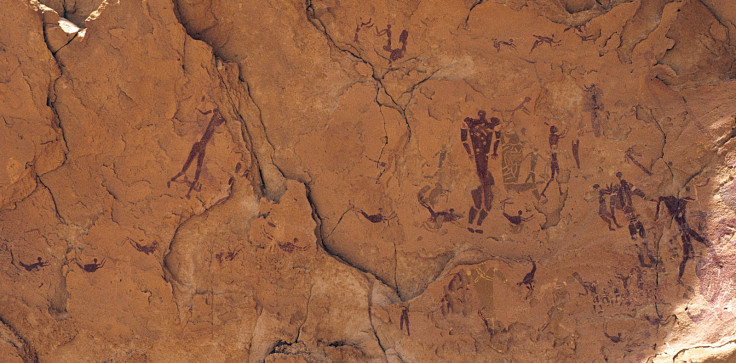Mysterious 5,000-year history of ancient Libyan rock art revealed
Rock art and pottery reflect the rise and fall of cattle grazing in the Gilf Kebir region.
Archaeologists have established an "absolute chronology" of prehistoric rock art in the Gilf Kebir region for the first time, using data from rock art, carbon dating, stratigraphy and other archaeological methods.
The history of rock art in the Gilf Kebir region, which stretches across parts of Libya, Sudan and Egypt, has been the subject of much speculation until now. Archaeologists have now published a new timeline for art in the region according to three distinct phases in a paper published in the journal Antiquity.
The research uses three independent datasets on the history of the region: climate data recorded in the rocks, archaeological data from inside and around the caves analysed by carbon-dating, and analysis of the styles of rock art and their superimposition.
"All three confirmed the same chronology completely independently," study author Stefan Kröpelin of the University of Cologne told IBTimes UK.
Around 8500 BCE, groups of hunter-gatherers occupied the area. The climate of the region was different today: summer monsoons influenced the climate of the region leading to heavy rainfall in Gilf Kebir.
This first occupation of the area lasted for about 2,000 years, archaeologists say, using data from carbon-dating, stratigraphy and other natural environmental records. Humans in this epoch, known as Gilf A, did not dabble much in rock art, and there are few examples of rock paintings from this era.
After 6500 BCE, a new phase of human life in the Gilf Kebir region took hold: Gilf B. This period saw an explosion of art, including ceramics, engravings and a range of painting techniques.
"The start of this period coincided with the first major production of rock art, both engravings and paintings," the authors write in the paper.

The Wadi Sura style became popular in the Gilf B phase, and is found at sites known as the Cave of Swimmers and the Cave of Beasts in western Gilf Kebir. The Wadi Sura signature style is headless beasts accompanied by swimming figures.
Then came Gilf C, beginning in 4400 BCE, when human inhabitants developed the cattle pastoralist style. These paintings feature large groups of cattle with different markings, accompanied by human figures who may be their herders.
The start of this epoch was marked by a change in climate in the region, with rainfall patterns changing from a short summer monsoon season to heavier winter rains. This is thought to have made the site ideal for grazing cattle, which is reflected in the human inhabitants' preoccupation with the animals in their art, the archaeologists say.
This golden age of rock art in the Gilf Kebir region lasted until about 3500 BCE, when the area was abandoned. It is thought that during this time, an overall trend towards aridity and desertification that began during Gilf C took hold to the extent that cattle grazing was no longer possible.
© Copyright IBTimes 2024. All rights reserved.






